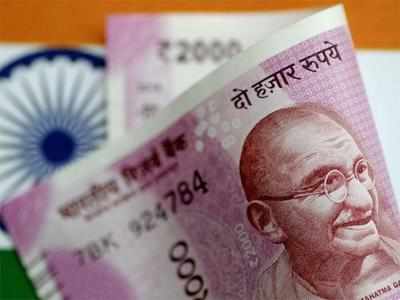- News
- Business News
- India Business News
- RCEP: Why India softened its stand on a mega trade deal
Trending
This story is from September 14, 2019
RCEP: Why India softened its stand on a mega trade deal
Months after India said it was not convinced if the Regional Comprehensive Economic Partnership, a proposed 16-nation trade deal better known as RCEP, is a win-win, New Delhi appears to be taking a more nuanced approach, raising hopes of an agreement.

(Representative image)
Key Highlights
- RCEP or Regional Comprehensive Economic Partnership is a 16-nation free trade bloc comprising the 10 ASEAN members and China, India, Japan, South Korea and Australia
- The RCEP members collectively account for 30% of global trade
NEW DELHI: Months after India said it was not convinced if the Regional Comprehensive Economic Partnership, a proposed 16-nation trade deal better known as RCEP, is a win-win, New Delhi appears to be taking a more nuanced approach, raising hopes of an agreement. New Delhi is hosting a two-day technical meeting with members of RCEP beginning today.
What's RCEP? It's a 16-nation free trade bloc comprising the 10 ASEAN members and China, India, Japan, South Korea and Australia.The RCEP members collectively account for 30% of global trade. Trade surplus ASEAN member nations and others like Japan have been at the forefront of the push for the deal. China too sees the proposed free trade bloc as a hedge against the shockwaves from the trade dispute with the US.
What's the issue? India, a trade deficit nation (it imports more than it exports; difference was a little over $100 billion last year, including goods and services), fears RCEP could lead to higher imports from export-heavy nations such as China and Japan. Last year, the finance ministry officials said that concessions under RCEP could top Rs 30,000 crore a year once they kick in and double to Rs 60,000 crore once fully in force.
But... Commerce minister Piyush Goyal, who last July suggested the deal is not a win-win, this week said "national interest cannot be hijacked by one or two industries". Goyal said the sooner the trade deal is concluded, with "adequate protection", the better it is for India.
Consider India's pharma industry, dominated by branded generics, which exports nearly as much as it supplies to the domestic market. In 2009, consultancy firm McKinsey projected the industry could be worth $55 billion as a base case, and has an optimistic case to be worth $70 billion. That has not borne fruit. This July, in its review of financial year 2019, Care Ratings said the pharma industry could rise by 9%-11% to $41.9 billion in FY2020. That's lower than the base case projected by McKinsey in 2009. Troubles with the US agency FDA and price caps in India have played a part. With RCEP, however, Indian pharma gets access to the Chinese market, where there aren't many strong local competitors.
What now? Much would depend if India could negotiate certain protective measures for goods such as agriculture on RCEP. Yet the opposition to the deal has weakened as the Indian economy too appears to have hit a wall.
What's RCEP? It's a 16-nation free trade bloc comprising the 10 ASEAN members and China, India, Japan, South Korea and Australia.The RCEP members collectively account for 30% of global trade. Trade surplus ASEAN member nations and others like Japan have been at the forefront of the push for the deal. China too sees the proposed free trade bloc as a hedge against the shockwaves from the trade dispute with the US.
What's the issue? India, a trade deficit nation (it imports more than it exports; difference was a little over $100 billion last year, including goods and services), fears RCEP could lead to higher imports from export-heavy nations such as China and Japan. Last year, the finance ministry officials said that concessions under RCEP could top Rs 30,000 crore a year once they kick in and double to Rs 60,000 crore once fully in force.
But... Commerce minister Piyush Goyal, who last July suggested the deal is not a win-win, this week said "national interest cannot be hijacked by one or two industries". Goyal said the sooner the trade deal is concluded, with "adequate protection", the better it is for India.
So what happened? India, as a whole, may be a trade surplus nation, but that doesn't mean the trade deal will only increase imports. Industries such as pharma and cotton see RCEP as a ramp to large markets such as China, while sectors such as steel and agriculture are wary of higher imports from China.
Consider India's pharma industry, dominated by branded generics, which exports nearly as much as it supplies to the domestic market. In 2009, consultancy firm McKinsey projected the industry could be worth $55 billion as a base case, and has an optimistic case to be worth $70 billion. That has not borne fruit. This July, in its review of financial year 2019, Care Ratings said the pharma industry could rise by 9%-11% to $41.9 billion in FY2020. That's lower than the base case projected by McKinsey in 2009. Troubles with the US agency FDA and price caps in India have played a part. With RCEP, however, Indian pharma gets access to the Chinese market, where there aren't many strong local competitors.
What now? Much would depend if India could negotiate certain protective measures for goods such as agriculture on RCEP. Yet the opposition to the deal has weakened as the Indian economy too appears to have hit a wall.
End of Article
FOLLOW US ON SOCIAL MEDIA















